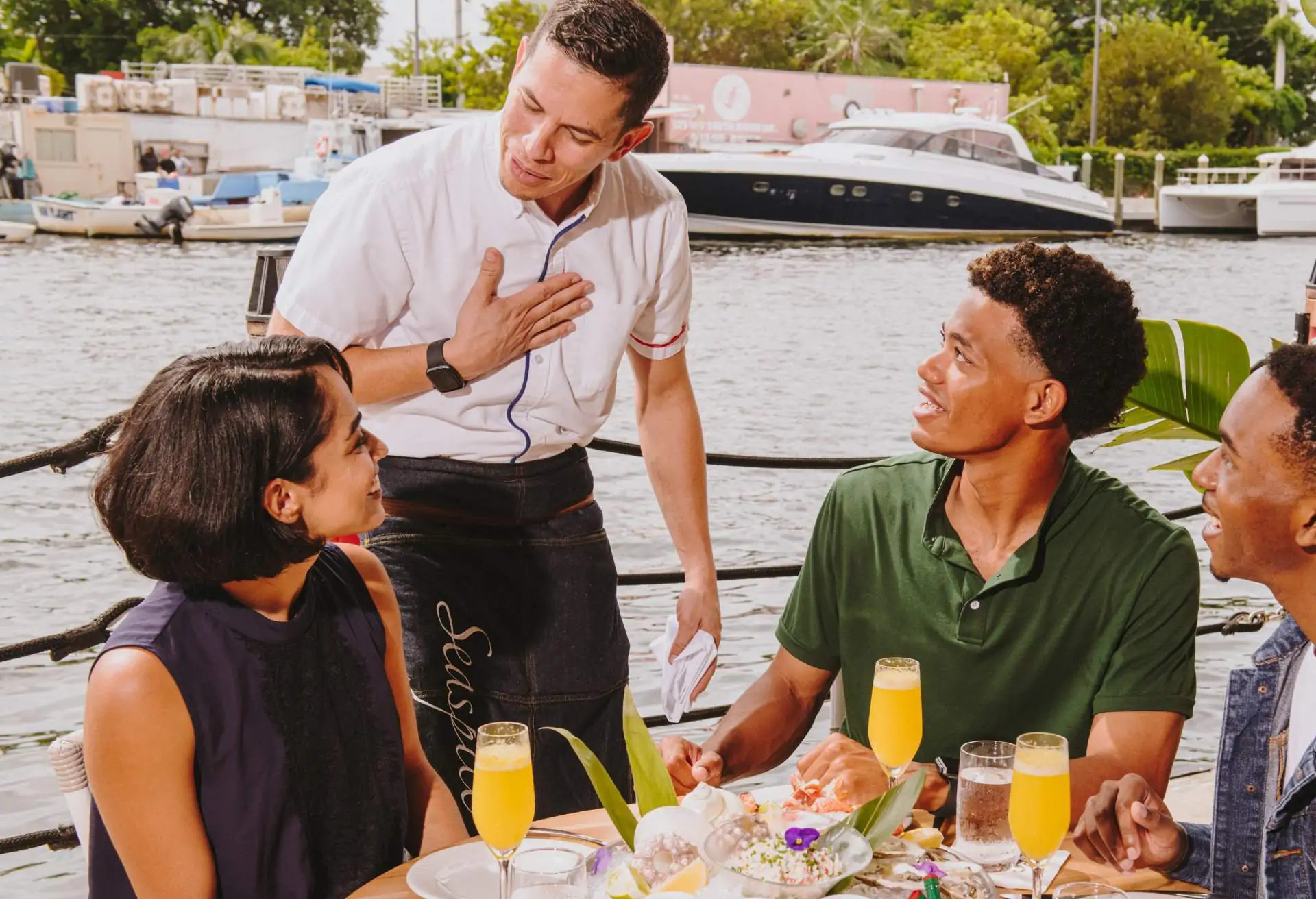Everyone loves freebies. It’s a big reason restaurant loyalty programs are popular with guests and restaurateurs alike. 80% of Americans belong to at least one loyalty program; the average Canadian belongs to 13.5 and counting.
It doesn’t matter whether the place is a fast food outlet or a five-star restaurant—all restaurants could benefit from building a loyalty program.
One survey showed that 25% of guests think loyalty programs are “extremely important” to their restaurant experiences. Though these programs are less common at sit-down restaurants, 90% of fine-dining guests say they’d sign up, according to another report.
There’s a lot to gain from offering a loyalty program for your most valuable guests. And there’s a right style of loyalty program for nearly every restaurant. Here’s everything you need to know about creating one that’s best for you.
Quick links
What is a restaurant loyalty program?
Do restaurant loyalty programs work?
How to start a loyalty program
What are the types of loyalty programs?
What kind of rewards do loyalty programs offer?
How to promote a restaurant loyalty program
What is a restaurant loyalty program?
It seems simple on the surface, but loyalty programs can take many shapes for different restaurants. It can get pretty complicated, but it doesn’t have to be.
At its most basic, a loyalty program rewards customers for repeat visits. It’s a way to acknowledge and say thank you to regulars. At the same time, a great loyalty program incentivizes people to become regulars.
Do restaurant loyalty programs work?
In a word, yes. They’re among the most effective customer retention strategies for restaurants. Loyalty programs clearly drive revenue.
More than half of people (57%) say they’d spend more money if a loyalty program is in play. And driving up loyalty by 5% could increase profits by at least 25% for restaurants, according to PYMNTS.com. Another study suggests people will spend 39% more than normal.
Finally, when people are choosing where to eat, a restaurant where they already participate in a loyalty program has an obvious edge.
How to start a loyalty program
There is plenty to consider once you’ve decided to take the plunge. Here are the initial steps you should think about taking before you officially kick off a loyalty program:
1. Decide on a strategy
From the lowest tech paper-and-hole-punch system to the most sophisticated bespoke app, there are many ways to administer a program. Read on to the next section to learn more about some of the most common strategies and choose the one that suits you.
2. Consider technology
People like things that are easy for you and guests. Getting assistance from a third-party app or using a tool that integrates with the POS can make participation a lighter lift. It may take a bit of effort to get set up, but it will likely be worth it in the long run.
3. Educate your team
Once you’ve settled on the details of your loyalty program, explain it to every member of the front of house team. They’re the ones who will be “selling” the program to guests, after all. Make sure they can explain the benefits clearly and concisely.
Provide rock-solid training on how guests redeem whatever rewards are part of the program, including how to code them into the POS accurately. You want to avoid any confusion about this. Servers who don’t know how to redeem rewards during a busy service can slow things down.
4. Choose a sign-up bonus
Tempt people to sign up for the program by offering a reward they get immediately. It can be hard for guests to say no to a 5% discount on their check, a free brownie sundae, or 100 points on the spot.
What are the types of loyalty programs?
Loyalty programs for restaurants usually fall into one of the following categories. That said, it’s important to create a program that reflects your unique restaurant so feel free to color outside the lines when brainstorming one.
1. Punch card
This is the OG loyalty program your corner coffee shop and sandwich spot may still be using. Guests are issued a business card-size piece of cardboard with 10 spots for holes to punch as you buy lattes or tuna melts.
When the card is punched out, your next order is on the house. This is as simple as it gets, and a reasonable choice for certain types of restaurants.
2. Credit card
A loyalty program linked to a guest’s credit card is much more convenient for people than carrying around an extra card or even needing to download an app. These systems make participation basically automatic.
People opt into the program once, and then they can pay the way they normally would and still earn credit in the loyalty program. Neither the guest nor the restaurant needs to remember to do anything.
3. Membership
Membership style programs may be linked to a credit card, have a dedicated card, or operate via an app. The membership style program is usually offered by higher-end restaurants with the goal of offering a feeling of exclusivity and premium perks.
Sometimes people will pay a fee to enroll in these programs. The Landry Select Club, which includes more than a dozen restaurant brands, including Morton’s Steakhouse and Rainforest Cafe, charges a $25 membership fee, though members also receive a $25 welcome reward.
The Matthew Kenney restaurant group offers “House Accounts” that require prepayment in exchange for bonuses, special events, and exclusive experiences.
These programs with their membership status, loyalty cards, and special perks appeal to loyalty program members who want to feel like insiders and VIPs. They integrate the concept of loyalty programs with the entire guest experience.
4. Tiered
In a tiered loyalty program, benefits and perks vary based on criteria you establish. It could be based on visit frequency or tied to dollars spent. Though it is more complex to set up and run, it does have the benefit of incentivising people to reach the next highest level by dining more often and spending more.
What kind of rewards do loyalty programs offer?
At the end of the day, people join loyalty programs to earn rewards. (They’re sometimes also known as rewards programs.) So, the reward needs to be desirable. But what these rewards are specifically can vary quite a bit.
Here are some of the most common types of rewards offered by restaurants:
1. Points-based rewards
A points based loyalty program is a staple for a reason. People love the game-like experience of racking up points. Usually, a certain number of rewards points equals a dollar value guests can then spend at the restaurant. Points may also equal a percentage discount of a future dining experience.
2. Free items rewards
In some systems, guests are earning credit to a future freebie, which could be anything from free menu items to free delivery on their next takeout order. What the free reward items will be is always up to you.
3. Experiential rewards
These rewards are some of the most coveted by today’s diners, especially on the fine-dining end of the spectrum. Research suggests that up to 97% of loyalty programs reward people with so-called transactional rewards—in other words, free stuff.
But what people really crave are memorable activities. An exclusive cocktail party or an intimate chef’s tasting menu set up in the kitchen are the kind of rewards that people never forget.
Special experiences also happen to be the kind of thing people love to share on social media, creating a priceless buzz about the restaurant where they happened.
How to promote a restaurant loyalty program
Getting the word out about a new customer loyalty program is key to its success. Talk it up on social media. You may even consider offering existing loyalty program participants extra credit if they mention it in a social media post and tag you.
Don’t forget about your website—a dedicated page that outlines all the amazing possible rewards would be nice—and include it in your newsletter.
When you train the front of house team on the new program, make sure they understand the importance of talking it up to every table. This is a crucial step in building your loyalty program, whether it’s brand new or well established.
If you’ve ever wondered how to keep loyal customers coming back to your restaurants, a loyalty program is something to consider. Whether you want to start small or launch something more complex out of the gate, you’ll likely delight guests and increase revenue at the same time.




